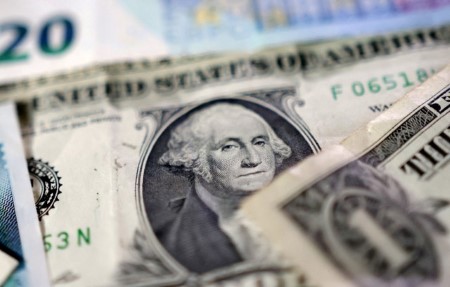




Quarterly Economic Growth Release: More BSP cuts to come
 DOWNLOAD
DOWNLOAD

Monthly Economic Update: Fed catches up
 DOWNLOAD
DOWNLOAD

Inflation Update: Steady and mellow
 DOWNLOAD
DOWNLOAD


US dollar rises, British pound falls as markets weigh trade deals, Fed rate cut

NEW YORK – The US dollar rose against major currencies on Wednesday as data supported market expectations of a Federal Reserve interest rate cut, while the pound sterling fell amid a selloff in British government bonds.
Traders were also positioning ahead of the Labor Department’s employment report for June, due to be released on Thursday, and the July 4 holiday.
The dollar had lost ground briefly but regained momentum after the ADP National Employment Report showed US private payrolls fell for the first time in more than two years in June, suggesting the Fed might cut rates as soon as September.
President Donald Trump’s massive tax-cut and spending bill passed the US Senate on Tuesday by the narrowest of margins, which is expected to add USD 3.3 trillion to the national debt. Debate over the legislation has now returned to the House of Representatives.
Trump announced Vietnam had struck a trade deal with the US, which lowers planned tariffs and could push other countries to reach similar agreements on duties ahead of the July 9 deadline for higher tariffs to kick in.
“I think the market logic is if nobody agrees to a deal, then the pressure is on the US and that’s dollar negative because it serves to adjust everything, including the fiscal bill since the tariffs are in the background even if they are not formally in the bill,” said Steve Englander, head of global G10 FX Research at Standard Chartered.
“But if you get countries settling, it’s the countries that are left out that are in trouble. It’s becomes risk positive generally because you’re comfortable that there will be (trade) deals.”
The dollar was up 0.15% to 143.635 against the Japanese yen, on track to snap two straight sessions of losses. It was up 0.06% to 0.79150 against the Swiss franc, on track for gains after seven consecutive sessions of declines.
“The dollar is bouncing against G10 currencies, and it’s not coincidental as it is coming with almost a 20 basis point rise in US interest rates,” said Marc Chandler, chief market strategist at Bannockburn Global Forex LLC.
British bonds suffered their worst selloff since October 2022, the day after the government sharply scaled back plans to cut benefits and there was speculation about the future of the country’s finance minister. Sterling GBP= weakened 0.79% to USD 1.3634 against the dollar, dropping to a one-week low and poised to snap two straight sessions of gains.
“It’s not just the British pound that is sharply lower but the gilts are under a lot of pressure as well. I think it’s just a crisis of confidence in the Labour government,” Chandler added.
The euro fell 0.08% to USD 1.179725 against the dollar but gained 0.9% versus the pound sterling.
Eurozone inflation edged up last month to the European Central Bank’s 2% target, confirming the era of runaway prices is over and likely shifting policymaker focus to tariff-related volatility.
The dollar index, which measures the greenback against a basket of currencies including the yen and the euro, rose 0.154% to 96.786, on track to snap nine straight sessions of losses. The index was still trading at multi-year lows after having its worst half-year since the 1970s, weighed by trade uncertainty.
The 2-year note yield, which typically moves in step with interest rate expectations for the Federal Reserve, rose 1.2 basis points to 3.789%, reversing earlier losses.
The Canadian dollar strengthened 0.35% versus the greenback to C$ 1.36 per dollar. The dollar strengthened 0.03% to 7.161 versus the offshore Chinese yuan.
(Reporting by Chibuike Oguh in New York; Additional reporting by Kevin Buckland; Editing by Chris Reese and Nick Zieminski)
This article originally appeared on reuters.com





 By Reuters
By Reuters